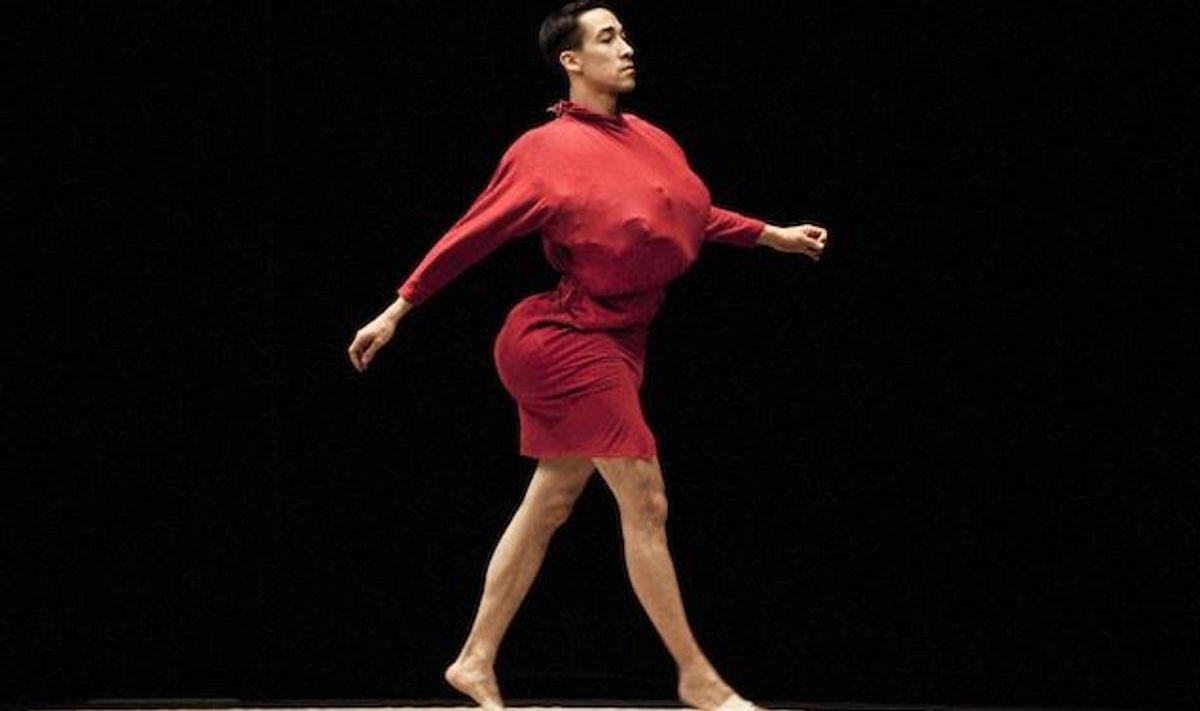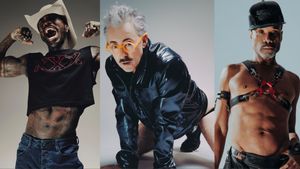'Antigone Sr.' | Photo by Miana Jun
Trajal Harrell is a disciple of the Judson Church, which refers not to a religion but rather to the notorious 1960s and '70s post-modern movement collective named after the Greenwich Village chapel where it launched and frequently performed. The group brashly rejected the artifice of modern dance--the drama, the emotion, the prettiness--and championed a stripped down theater of the pedestrian and the everyday.
Harrell is also a young, gay, African-American man, who in 1998 attended his first voguing ball, a pageant-like event where men compete in elaborate costumes in various categories and artfully strut a communal catwalk. (It's the world that Jennie Livingston brought vividly to mainstream awareness in her 1990 documentary Paris is Burning.) A few years later, Harrell began frequenting mini-balls in Harlem, taking a disco nap before arriving at 3 a.m.
"At the time, I found what I was seeing at the balls more postmodern than what I was seeing at the theater," he explained to Out. "I also was stunned to discover that the voguing tradition had developed in the early 1960s...during the same historical [period] as the early postmodern dance movement."
Harrell began wondering what would have happened if those two disparate tribes had met at the time: "Voguing seemed to me very flamboyant and the opposite of minimalism, and I liked this opposition," he says. A few years ago, he began presenting a collection of works exploring that unique union under the umbrella Twenty Looks or Paris is Burning at the Judson Church, which comes in multiple sizes.
This weekend, Los Angeles tries on a size Large, a.k.a. Antigone Sr., performed by five men at REDCAT. The integration of Sophocles's tragedy blows up the historical scope of the concept and adds even more theoretical layers (because, after all, Harrell is also a Yale graduate).

"I wanted to connect voguing to the foundations of western drama," he says. "Of course, the post-moderns were against this Greek tragedy and mythologizing, so I enjoy this kind of rebellion against the ethos of postmodern dance."
But mining the material of the ancient Greeks is more than just a cheeky nod to the modern dance pioneer Martha Graham (famous for her interpretations of such figures as Clytemnestra, Oedipus, and Phaedra), it's also an insightful and unexpected frame with which to understand the lineage and tradition of the Harlem balls.
"I think voguing is probably not that different from what the ancient Greek theater was like," Harrell suggests. "My instincts tell me that there are major connections between it and voguing in terms of men playing female and male parts, the staging of movement, the competition aspect and the unbridled fervor of the event, among other things."
In proposing this connection, Harrell also points out that the "theater of antiquity was an intrinsically political theater" and wonders at its activist role in debating the status of women in society. So, too, he sees a link between that conversation and our own contemporary discourse around gender and sexuality.
Harrell is clear that he doesn't consider himself a voguer, or speak on behalf of that community ("I come to voguing as a dance researcher and observer") and is well aware of the risk of appropriation. But this acknowledgement is also part of the theoretical lining of his work.
And voguing is proving a potent Muse: his latest works bring voguing into dialogue with Butoh, a disarming form of dance that emerged from the ashes of post-World War II Japan, known for its often grotesque and explicit images. The first work appeared at the Museum of Modern Art last year; the next arrives in 2015.
"Get ready," he says. "It's not going to be pretty!"
REDCAT in downtown Los Angeles presents the West Coast premiere of Trajal Harrell's 'Antigone Sr. / Twenty Looks or Paris is Burning' at the Judson Church, April 3-6. REDCAT.org





















































































